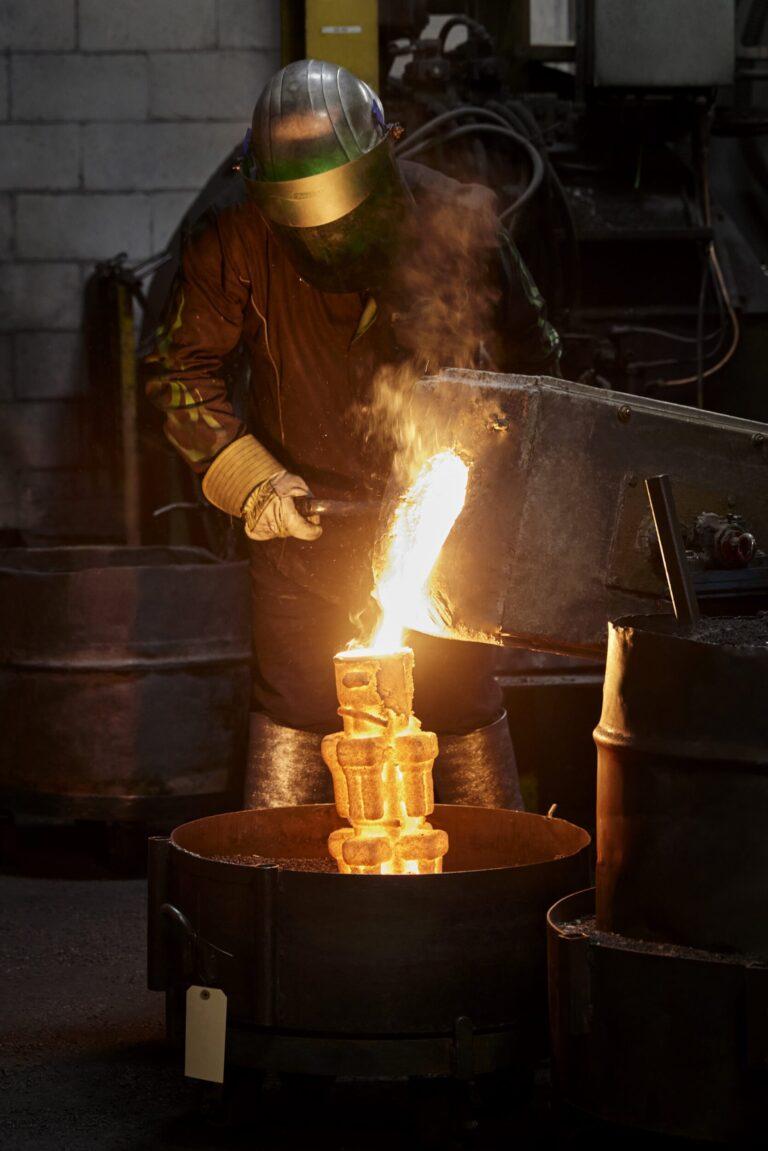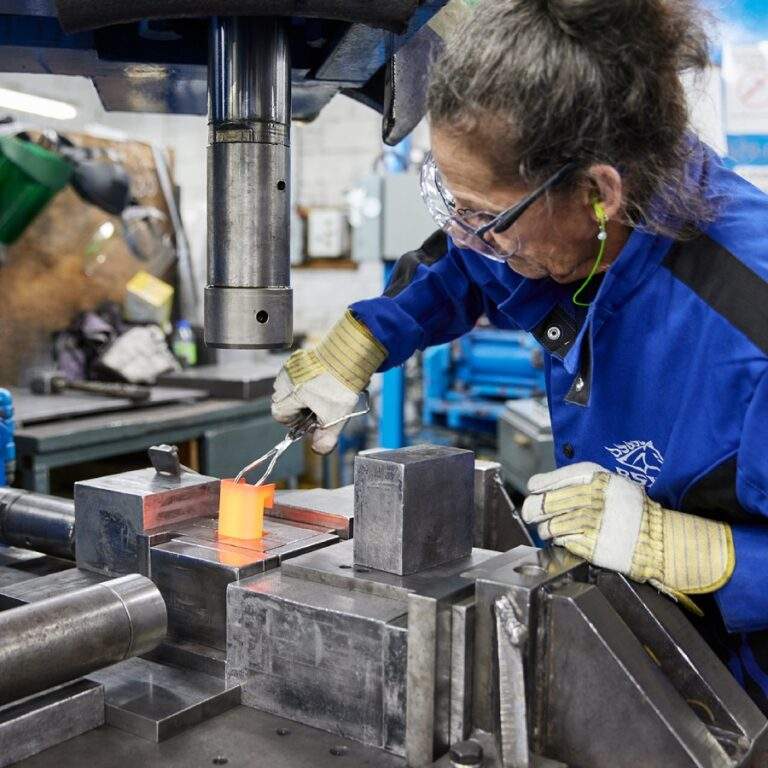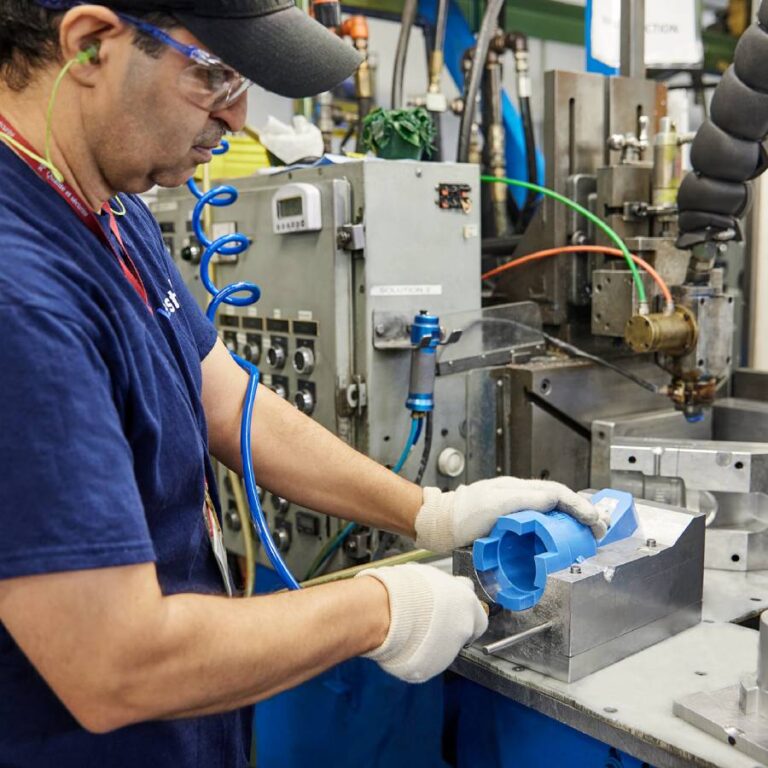In the field of manufacturing high-precision metal parts, lost wax casting plays a crucial role in enabling the production of clean and complex shapes. This ancestral technique, combining artisanal know-how and technological innovation, offers remarkable possibilities for improving the precision of production processes.
In this article, we will explore in detail the methods and tools used in investment casting to create clean shapes and the benefits it offers in terms of quality, reliability and efficiency. Prepare to dive into the fascinating world of manufacturing high-precision metal parts, where every detail counts and the pursuit of perfection is a true obsession.
The importance of alloys in the quest for perfection in foundry
The choice of alloys is crucial in manufacturing clean shapes from investment casting. The selected metal alloys must meet the specific requirements of the part to be manufactured and guarantee optimal strength and good flowability during the molding process.
Suitable alloys ensure the precision of the details and dimensions of the final part while facilitating wax removal and minimizing the risk of defects during casting. By carefully adjusting the composition of alloys based on desired properties, manufacturers can improve the quality and reliability of their parts while optimizing production processes to achieve clean, flawless shapes.
Cutting-edge techniques and tips for surgically precise results
In making sharp shapes through investment casting, the use of advanced tools and techniques is essential to ensure optimum precision at every production stage.
- Computer-aided modelling (CAD) technologies: make it possible to design precise digital models, providing a detailed representation of the part to be manufactured. These models then serve as the basis for manufacturing molds and wax patterns, ensuring faithful reproduction of the desired characteristics.
- 3D printing: advanced mold manufacturing techniques, such as 3D printing of wax or plastic molds, achieve smooth surfaces and precise dimensions, reducing the need for manual finishing. The use of high-quality mold materials and specialized coating techniques ensures uniform casting and avoids surface defects.
- Temperature-controlled: furnaces and vacuum or pressure casting techniques ensure even distribution of the molten metal in the mold, reducing the risk of porosity and distortion. Additionally, using advanced cooling techniques allows the solidification process to be precisely controlled, ensuring crisp shapes and tight dimensional tolerances.
- Vacuum or pressure casting: Vacuum or pressure casting techniques provide an even distribution of molten metal in the mold, which helps improve the precision of castings.
- Finite Element Analysis (FEA): Finite element analysis simulates the behavior of parts under different loads and conditions, allowing their design to be optimized for maximum performance.
By combining these advanced tools and techniques, manufacturers can improve the accuracy and quality of their investment casting parts, meeting the most stringent requirements for precision and performance.
NNS (Near-Net-Shape) technology: a revolutionary approach
In manufacturing near net shapes by investment casting, NNS (Near Net Shape) technology deserves special attention. This innovative approach aims to produce metal parts with dimensions and geometric characteristics very close to those specified, reducing the need for post-cast finishing.
Near net shape, technology leverages advances in digital model design and mold manufacturing techniques to achieve castings with increased precision. Manufacturers can minimize dimensional variations and potential defects by optimizing model design and using advanced simulation techniques, achieving clean shapes straight out of the mold.
By reducing the need for manual finishing, NNS technology offers significant benefits in terms of production time and costs. It also helps improve part reproducibility and ensure consistent quality, which is particularly important in demanding sectors such as aerospace, automotive and medical.
Maximize mechanical properties for unbeatable parts
In manufacturing net shapes by investment casting, improving the mechanical properties of parts is a crucial objective. Through advanced design and manufacturing techniques, manufacturers can optimize the structure and composition of parts to enhance their strength and durability.
One of the main methods to improve the mechanical properties of parts is to select appropriate metal alloys. By choosing alloys with specific properties, such as tensile strength, flexibility and corrosion resistance, manufacturers can tailor part characteristics to their particular needs.
Additionally, by optimizing pattern designs and using advanced mold manufacturing techniques, manufacturers can reduce internal stresses and structural defects that could weaken parts. By precisely controlling the casting and cooling process, it is also possible to achieve a more homogeneous microstructure, which helps to improve the mechanical properties of the final parts.
Finally, using heat treatments and specialized finishing techniques can also help strengthen the mechanical properties of castings. These treatments may include quench hardening, annealing to improve flexibility, or polishing to reduce surface roughness and improve fatigue resistance.
The quest for microstructural optimization: an exciting challenge
Microstructure optimization plays a crucial role in the constant quest to improve the performance of metal parts manufactured by investment casting. The microstructure of a metallic material, which refers to its arrangement on a microscopic scale, directly influences its mechanical properties and durability.
It is possible to optimize the microstructure of castings through advanced temperature and cooling control techniques during the casting process. By precisely controlling cooling parameters, manufacturers can promote the formation of homogeneous, well-ordered crystal structures, improving the material’s strength and toughness.
In addition, using specific metal alloys and manipulating post-casting heat treatments make it possible to finely adjust the microstructure to obtain optimal mechanical properties. For example, controlled transformation of crystalline phases can strengthen the tensile strength and hardness of the material, while grain refinement can improve its ductility and toughness.
By optimizing the microstructure of metal parts, manufacturers can improve their mechanical properties and ensure maximum performance and durability in various applications, from aerospace to the automotive industry. This paves the way for significant advances in manufacturing clean shapes using investment casting, reinforcing the technique’s position as a method of choice for producing high-quality metal parts.
Investment casting: revolutionizing net shape manufacturing
In manufacturing clean shapes, investment casting is a game-changer. Also known as investment casting, this process creates metal parts with complex and precise shapes with unrivalled precision. Using high-quality wax patterns, ceramic molds and metal alloys, investment casting offers exceptional flexibility and quality. Whether in aerospace, automobiles or even jewelry, this process has opened up new possibilities in manufacturing, giving designers and engineers unprecedented creative freedom. With investment casting, clean-shape manufacturing is now within reach, paving the way for dramatic advances in many industrial sectors.
The future of manufacturing: revolutionary strategies for perfect metal parts
In the manufacturing landscape, the future looks bright with the emergence of clean-shape-focused manufacturing strategies. These strategies, which include techniques such as investment casting, are revolutionizing the way we produce complex and precise metal parts. Through advanced digital modeling, innovative mold-making techniques and cutting-edge materials, manufacturers can produce crisp parts with increased efficiency and precision.
Adopting these net-form strategies opens new opportunities in various industrial sectors, from aerospace and automotive to medicine and electronics. These techniques offer significant cost, production time and part quality advantages by reducing the need for post-cast machining and enabling the production of parts with complex geometries in a single step.
As technology advances and innovations emerge, we expect to see increasing adoption of net-form strategies in the manufacturing sector. These approaches promise to radically transform the way we design, manufacture and use metal parts, ushering in a new era of efficiency, precision and sustainability in manufacturing the products of tomorrow.
Similar articles


